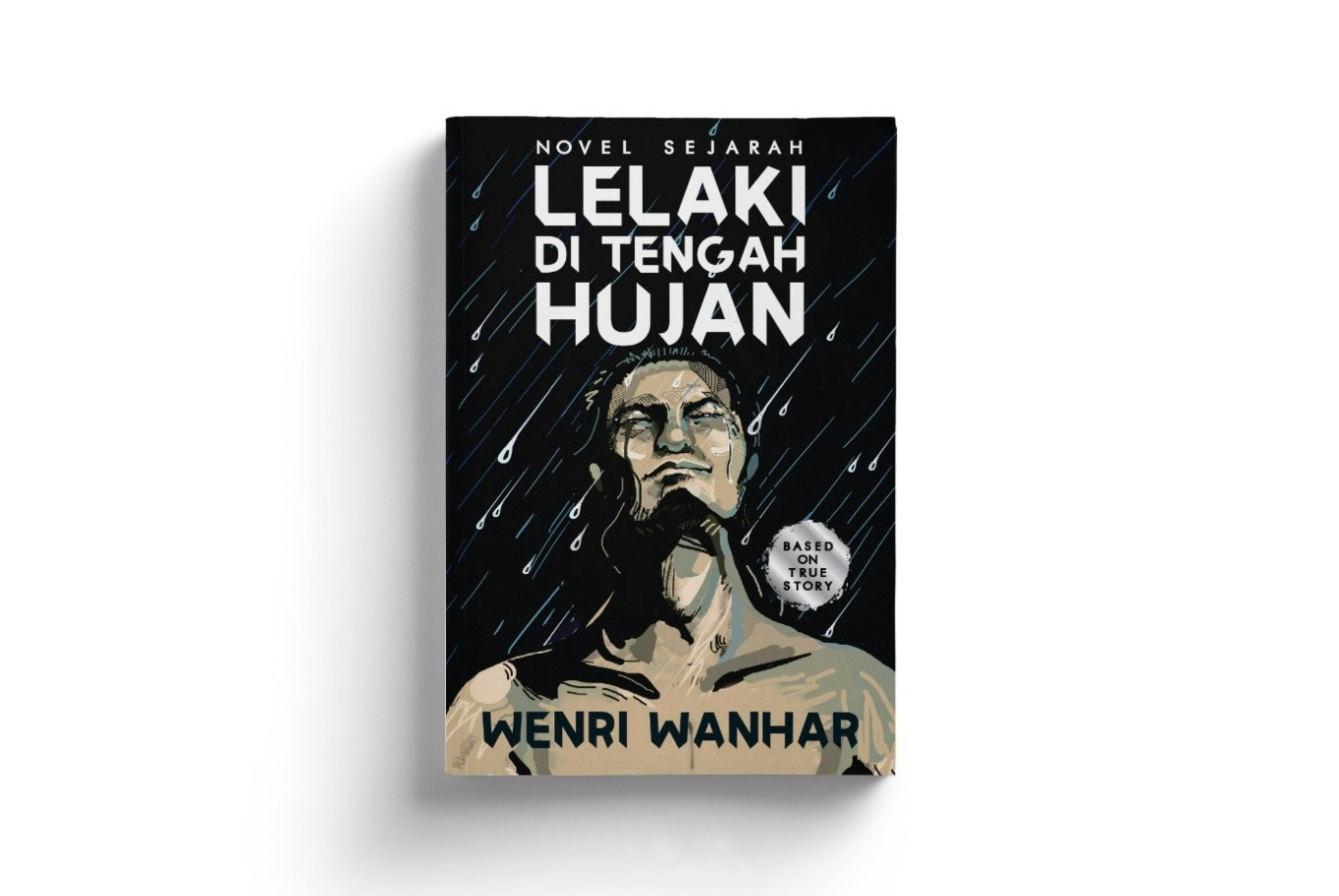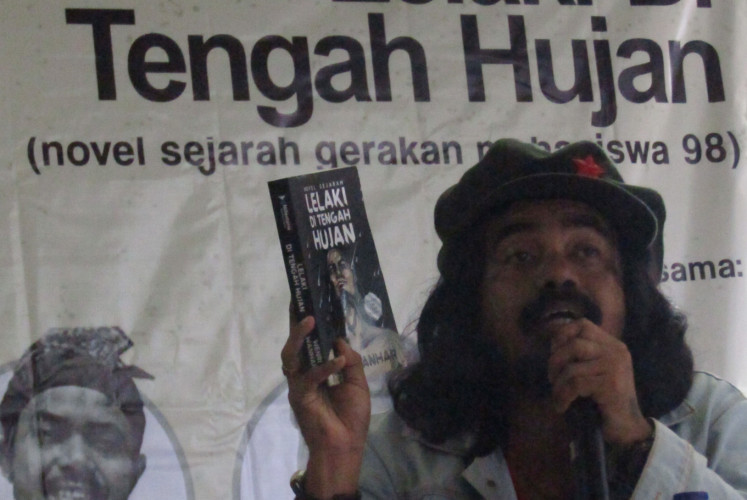Popular Reads
Top Results
Can't find what you're looking for?
View all search resultsPopular Reads
Top Results
Can't find what you're looking for?
View all search results‘Lelaki di Tengah Hujan’ portrays history of 1998 student movement
The novel shares a glimpse into the lives of student activists in the 1990s, the movement of which later triggered the beginning of the Reform Era in 1998 and resignation of then-president Soeharto.
Change text size
Gift Premium Articles
to Anyone
S
tudent activist Bujang Parewa was caught by police following a “bomb” explosion at his home in Tanah Tinggi low-cost apartment in Jakarta on Jan. 18, 1998. He remained silent despite being tortured by the police. He stayed that way though they had tried to coax him by involving his girlfriend, Sarah.
“You’re wrong, Sarah, if you come to convince me to fulfill their wish,” Bujang said.
The scene above is part of Lelaki di Tengah Hujan (Man in the Rain), a novel written by journalist Wenri Wanhar. Published in February, the novel shares a glimpse into the lives of student activists in the 1990s, the movement of which later triggered the beginning of the Reform Era in 1998 and resignation of then-president Soeharto.
“It’s my responsibility to write texts that people think are unimportant and forgotten,” said Wenri during his book discussion in Yogyakarta on Friday, March 15.
Through 395 pages, the book follows the struggle of Bujang Parewa, a student of Surakarta State University (UNS), who has a crucial role in initiating the student movement in the 1990s. Bujang has been involved in establishing Students Solidarity for Democracy in Indonesia (SMID) and the People’s Democratic Party (PRD). Members of the organizations were kidnapped and a number of them remain missing until today. Bujang is described as being tenacious in fighting for marginalized people.
Romance was not excluded and in fact enlivened the story, especially in the moments when the debate about the strategy of the students’ movement occurred and how both the military and police violently confronted the activists.
Read also: Short film ‘Laut Bercerita’ preserves the novel’s humanity
Journalist Wenri Wanhar explains his latest book 'Lelaki di Tengah Hujan' in a discussion event in Yogyakarta on Friday, March 15. His novel narrates the story of student activists in 1998. (JP/Bambang Muryanto)Bujang is said to still devote himself in struggling for marginalized people. It was only rain that warmly welcomed him when he was released from Salemba detention center in Central Jakarta in 1998.
Wenri said Indonesians need to understand history to be a strong nation. “[Our] present comes from [our] past,” said the author of 2014 book Jejak Intel Jepang (Traces of Japanese Intel).
Lelaki di Tengah Hujan originated from Wenri’s meeting with Bujang Parewa when he became a student of Bung Karno University in Central Jakarta in 1999. Bujang then told Wenri about his secrets that later became a reference for Wenri’s 2006 thesis titled The Role of SMID in Resisting Soeharto’s Capitalist, Authoritarian Regime. As for the book, he had to do more research and his manuscript was not finish until 2010.
Meanwhile, poet Joko Pinurbo praised Wenri for his ability to describe Bujang Parewa as a tough character without glorifying him as a flawless hero. “The novel is a highly important historical document because we won’t get it at school or from the country,” said Joko, adding that he hoped young generation will be able to read it while they have the chance. “Who knows, perhaps the book will be banned in the future.”
Several 1998 activists also attended the discussion event, including John Tobing, composer of Darah Juang (Blood of Struggle), a song that was often sung by activists during their rally, and “Stone”, an activist from Muhammadiyah Surakarta University (UMS). Both were mentioned in Wenri’s book.
Hari Begi, one of the student activists from Yogyakarta, expressed hope that the book could inspire the younger generation. “It’s about how we revitalize the spirit of struggle 20 years ago for our present day,” Hari said. (wir/mut)












